blog
Photography Museum Days 2021
PHmuseum is a curated platform created in 2012 focused on finding innovative ways to display photography and to engage, educate, and connect. PHmuseum has an online exhibition (first launched in 2013) and an online education component (the first lesson was launched in 2017; today its program goes from portfolio reviews, to workshops and masterclasses). It is also known for its program of grants, which offers cash prizes every year, the opportunity to exhibit at international photography festivals and to be featured in publications.
From the 23rd to 26th of September 2021 the first edition of the PhMuseum Days photography festival took place at DumBO space in Bologna, Italy. DumBO (Distretto urbano multifunzionale di Bologna) is a temporary urban regeneration space. It is in a former freight yard of the Italian railways, with warehouses and open areas made available to the city for culture, art, social life, music and sport.
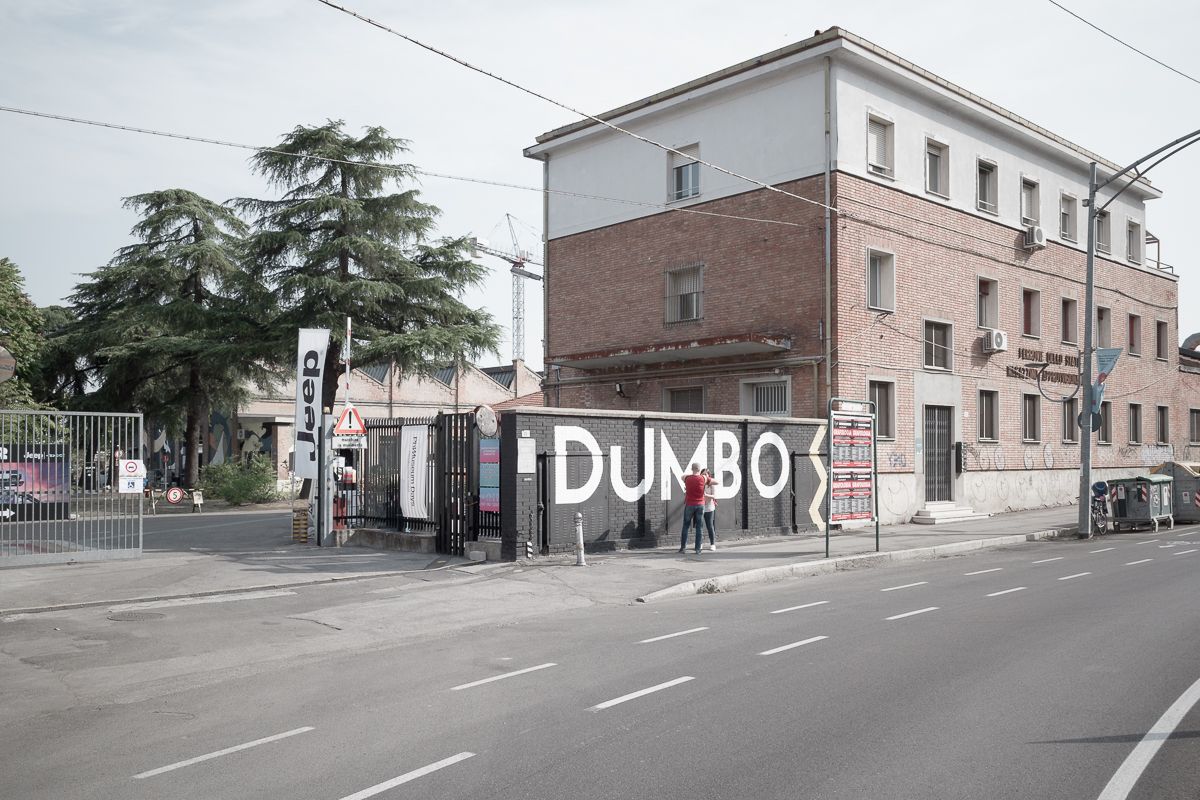
DumBO space entrance in Bologna, Italy
The festival aims to become one of the most important European cultural festivals and to contribute to making Bologna one of the main cities for contemporary photography. The theme for the festival is “A New Beginning.” It is meant to be an opportunity to rethink, through photography and visual arts, the decade that has just begun and to face the important challenges that it will bring such as equality, sustainability, social justice, innovation and technology.
The program of “A New Beginning” includes a collective installation, workshops, portfolio reviews, screenings, performances and a space dedicated to independent publishing. Alongside the collective exhibition are the works of:
Alejandro Chaskielberg – “Natur-e” is a reflection and a visual diary of their quarantine months spent in the woods of Patagonia due to Covid19 pandemic, in which the photographer and his daughter tell the process of adapting to this territory and how they remained in contact with the world thanks to technology.
Silvia Rosi – in “Encounter” the photographer explores the recent history of her family and her identity as an Italian woman of African descent, retracing the migratory path her parents faced in the late 1980s to reach Italy. Using an aesthetic that refers to the West African school of studio portraits, Rosi performs a narrative performance.
Fabiola Cedillo – her project “Human” observes how Human Assisted Reproduction Techniques have brought about changes in family structures, creating new forms of social bonds and consequently altering some of our beliefs. And investigates the human being’s need for reproduction, whether with a partner or independently, naturally or thanks to science.
Samuel Fordham – In “C-R92 / BY” the author draws on his personal experience following the deportation of his wife and child from the United Kingdom following Brexit and meditates on long-distance relationships kept alive thanks to the use of technology in a world characterized by the physical absence of close family members.
Ligia Popławska – “Fading Senses” reflects on the feeling of dislocation and loss of the present characterized by the prospect of a fading world and a state of sensory deprivation. Starting from the personal experience, the work tries to visually translate this state of mind and warn us about the more subtle and dangerous effects of climate change.
Vasantha Yogananthan – a “Myth of Two Souls” is based on images of the epic tale “The Ramayana.” It can be read as a visual exploration of a man’s descent into the darkness of the soul and the victory of good over evil. The images are created with collages by mixing different photos that induce in the viewer a state of disorientation.
Angelica Dass – “Humanæ” is a reflection on skin colour through a series of portraits. The project attempts to document humanity’s true colours by avoiding false labels such as white, red, black and yellow often associated with race and to reveal the contradictions and stereotypes related to race issues.
I had the chance to visit the festival for F-stop magazine on the 25th of September. It is located at an easy-15-minutes walking from the train station. It seems to be a good metaphor that when you arrive at the side of a bend in the road where the entrance to the festival is, you have got to decide if you want to go on your way or turn to “A New Beginning.”
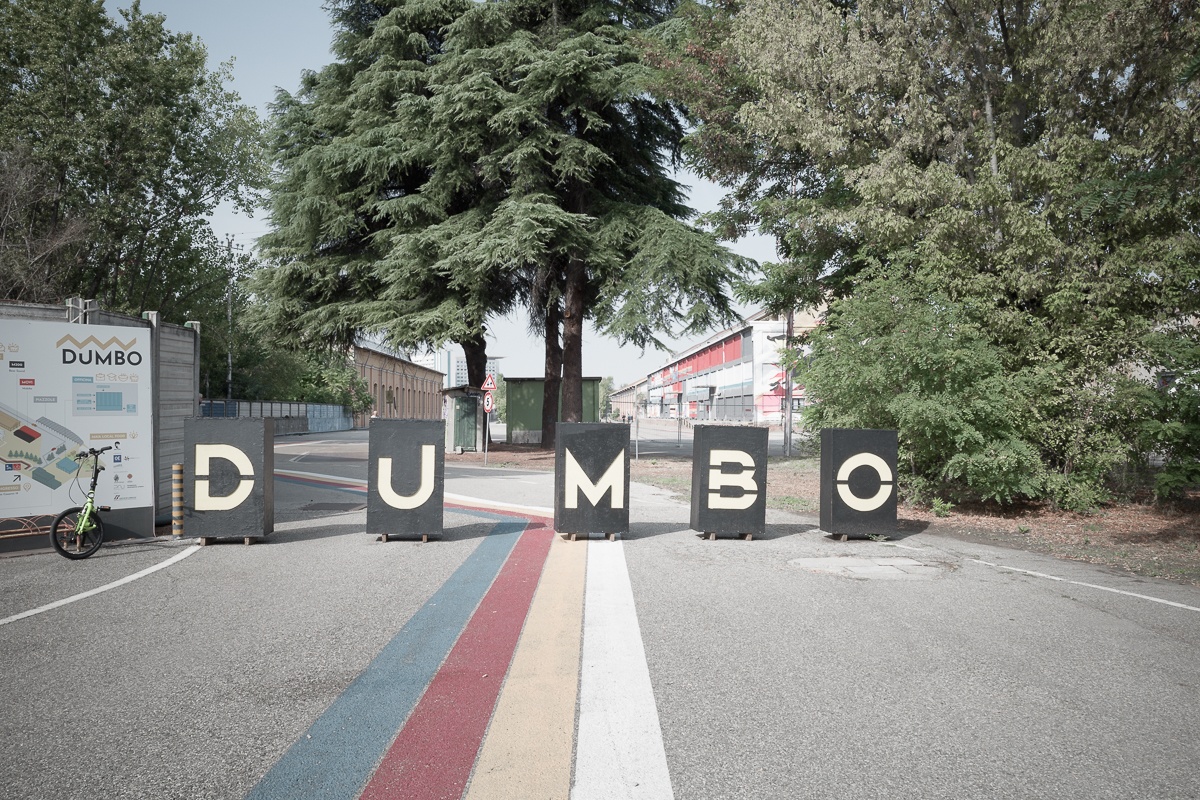
Access to DumBO space square in Bologna, Italy
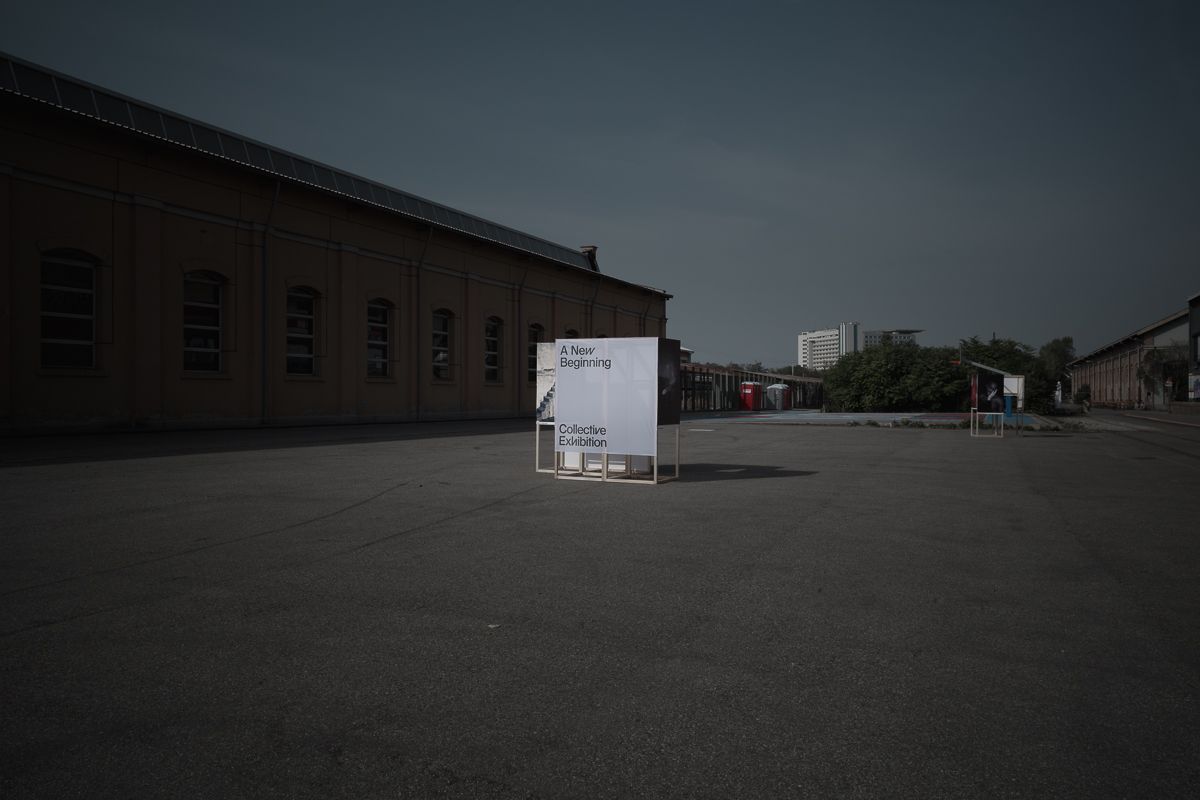
DumBO space square in Bologna, Italy
Once inside, I faced a big post-industrial square which led me to the event building that appeared larger due to the surrounding empty space. Inside the building was a big room where you could find the publisher’s hub and the conference stage. On the left side was a two-story space arranged in a rational way where you could enjoy the exhibitions. I particularly appreciated the organizers’ ability to isolate the exhibitions while keeping them in the same, single space in the attempt to maximize communication. I was able to visit the exhibitions and, in the meantime, listen to a presentation conference of a book and then enjoying the pages of some new books at the publisher’s desks. Good.
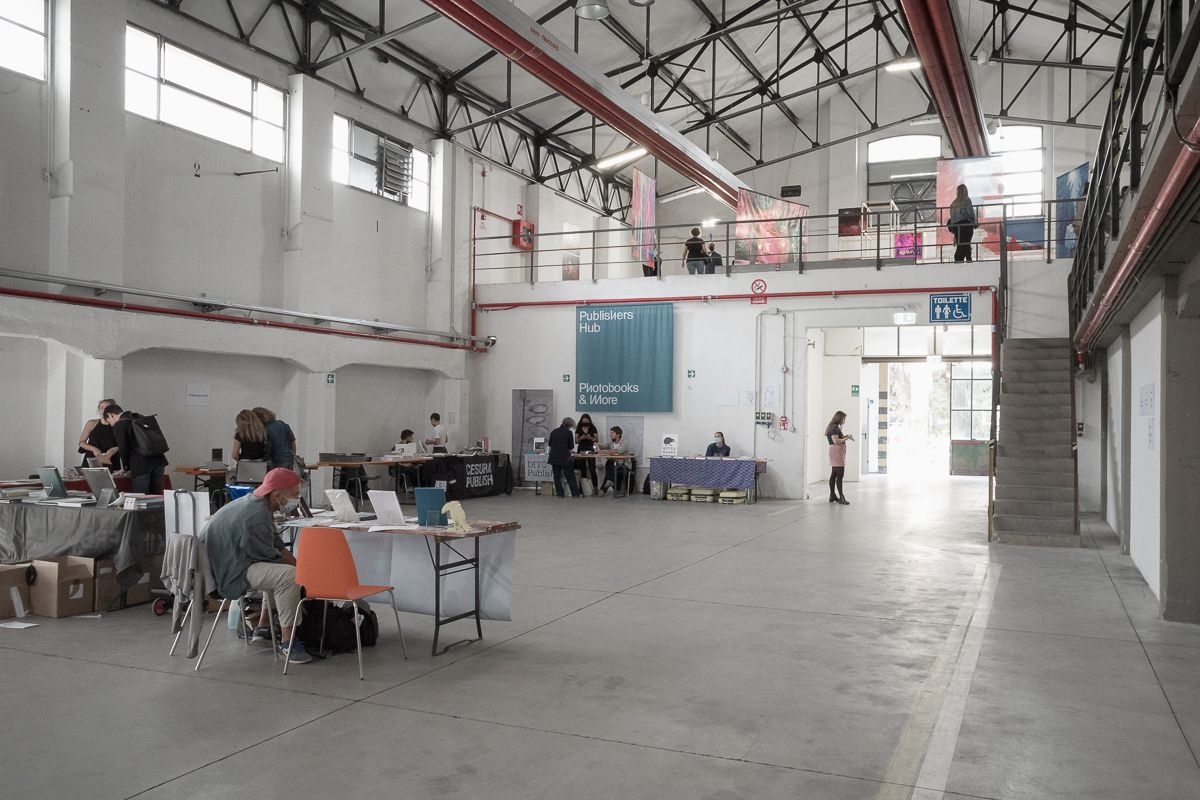
The publishers hub
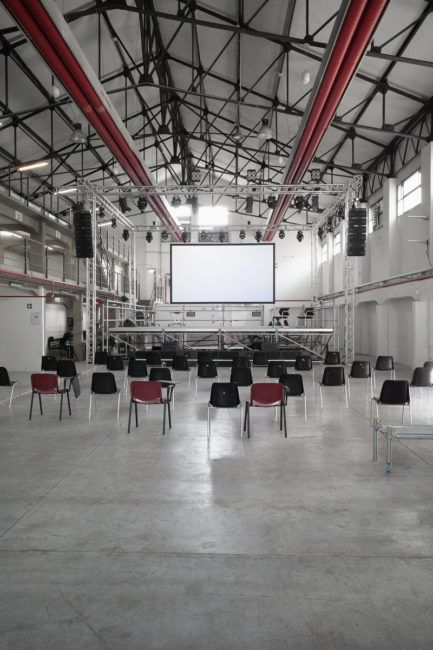
Conference area
The exhibitions had differentiated and personalized settings, perhaps biased towards visual art but absolutely at ease with the “fluid” and “modern” context, which bounced on the opposite side where the exhibition of Angelica Dass stood out with her giant prints filling the entire right wall of the building.
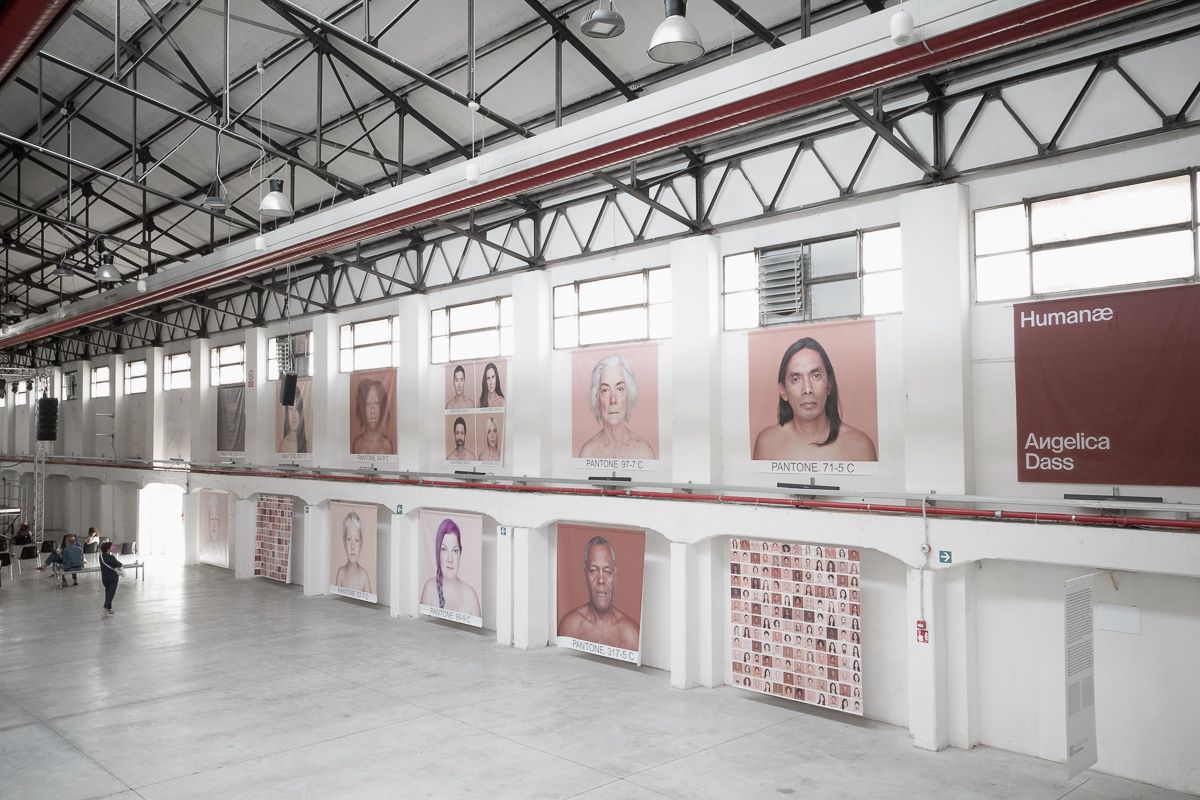
Angelica Dass “Humanae” Exhibition
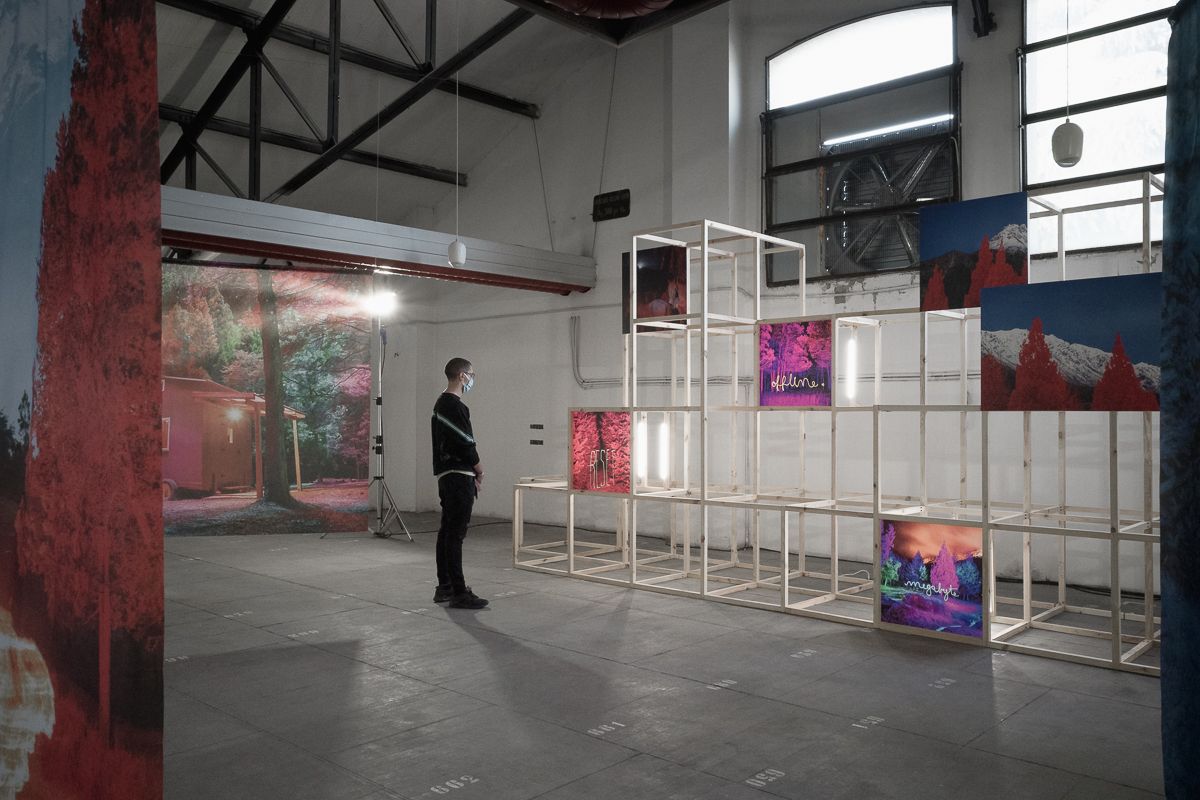
Alejandro Chaskielberg “Natur-e” exhibition
I did like the schedule full of appointments and meetings, and the presence of the authors of the images on show available to comment and tell about their works. In summary, I liked the first episode of “A New Beginning” and I think its evolved format has created an interesting precedent in the panorama of Italian festivals for which geography needs to be redefined. Good first!
I leave you with a small interview I did with Giuseppe Oliverio, the director of PhMuseum, about the point of arrival of his experience and about what the future may be.
Walter Borghisani: At what point has PHmuseum arrived: what is the summary of your ten-year activity?
Giuseppe Oliverio: PHmuseum is a dynamic reality that we think has now reached a first maturity thanks to its integrated offer of activities both on our online and physical platforms. We are very proud of our grants program, through which we discover many talents every year, of our education activities that goes from online portfolio reviews to long-term masterclasses and of all the other online activities that let us reach and work with an international audience.
WB: What is the direction that PHmuseum will take next?
GO: After having reached this first maturity our goal is to keep developing the 3 souls of the project (PHmuseum, PHmuseum Lab, and PHmuseum Days) while integrating their service more and more. We’d like our community to have a seamless experience to enjoy contemporary photography while forming and promoting the new generations of photographers
WB: What is the end point of the photograph?
GO: A photograph’s meaning differs from viewer to viewer and from context to context, which makes the medium and its language quite dynamic and in constant transformation.
WB: What is the direction that photography should take?
GO: We should leave the language to evolve in its many layers as it did in the past decade and we – as industry player – should facilitate inclusivity and diversity to enrich the process.
WB: What is the impact that social networks and the internet have had and will have in the diffusion of images and in the diffusion of photographic culture?
GO: The online world and social media are key elements of the great diffusion and evolution that photography experience in the past decade as it facilitate the learning process and exchange of information. It also allows inclusivity and an admixture of ideas, styles and point of views.
WB: This festival was a test for professionals, for photography enthusiasts and for the diffusion of photographic culture at national level: what is your balance and your vision?
GO: We are very happy with this first edition! Around 4000 people took part in this long-weekend of photography, we received very positive feedback from colleagues and visitors, and we all enjoyed the positive and constructive mood of the festival. It’s truly “A New Beginning” for us and an activity that truly integrates well with our project offering and philosophy. Thanks to all the people who supported us and the city of Bologna for welcoming the project, it’s all a great motivation in working hard for the next edition.
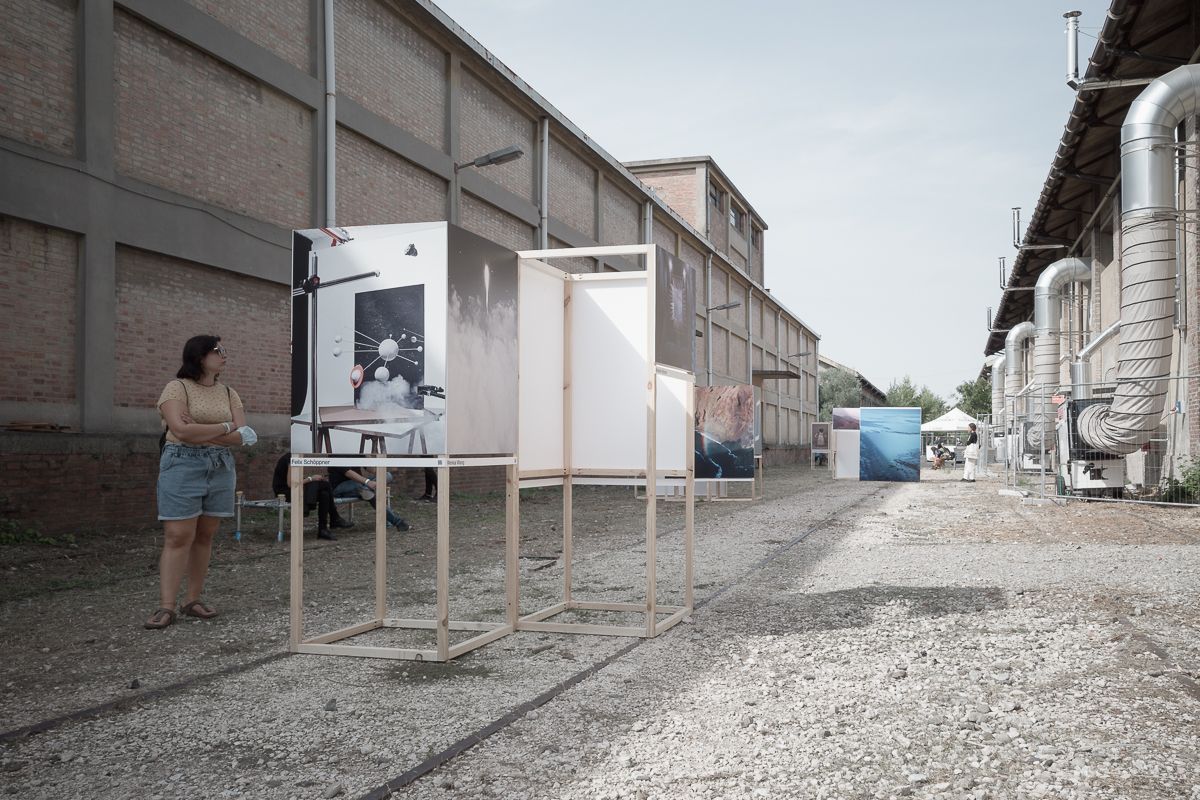
Collective exhibition
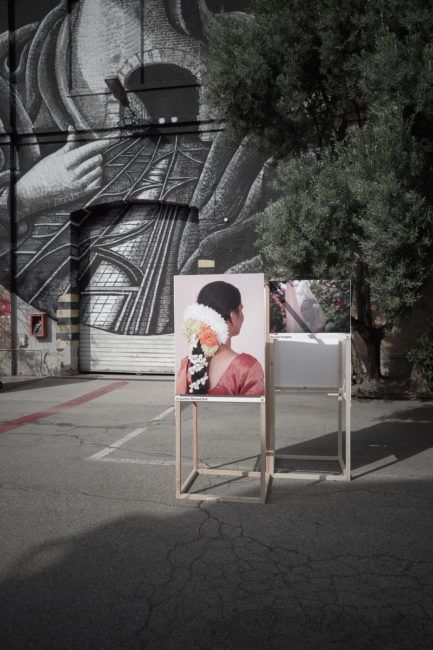
Collective exhibition
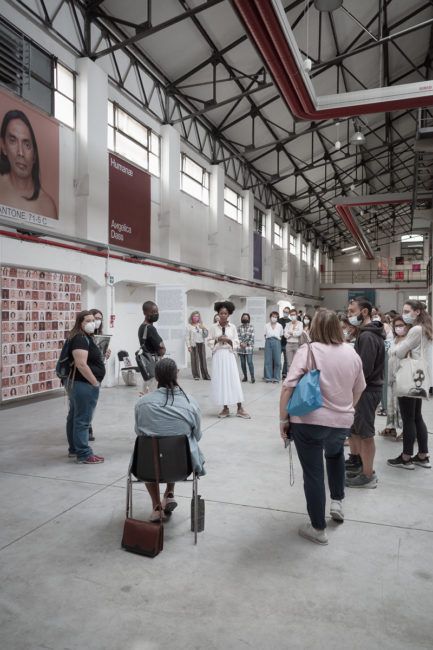
Angelica Dass telling about her work
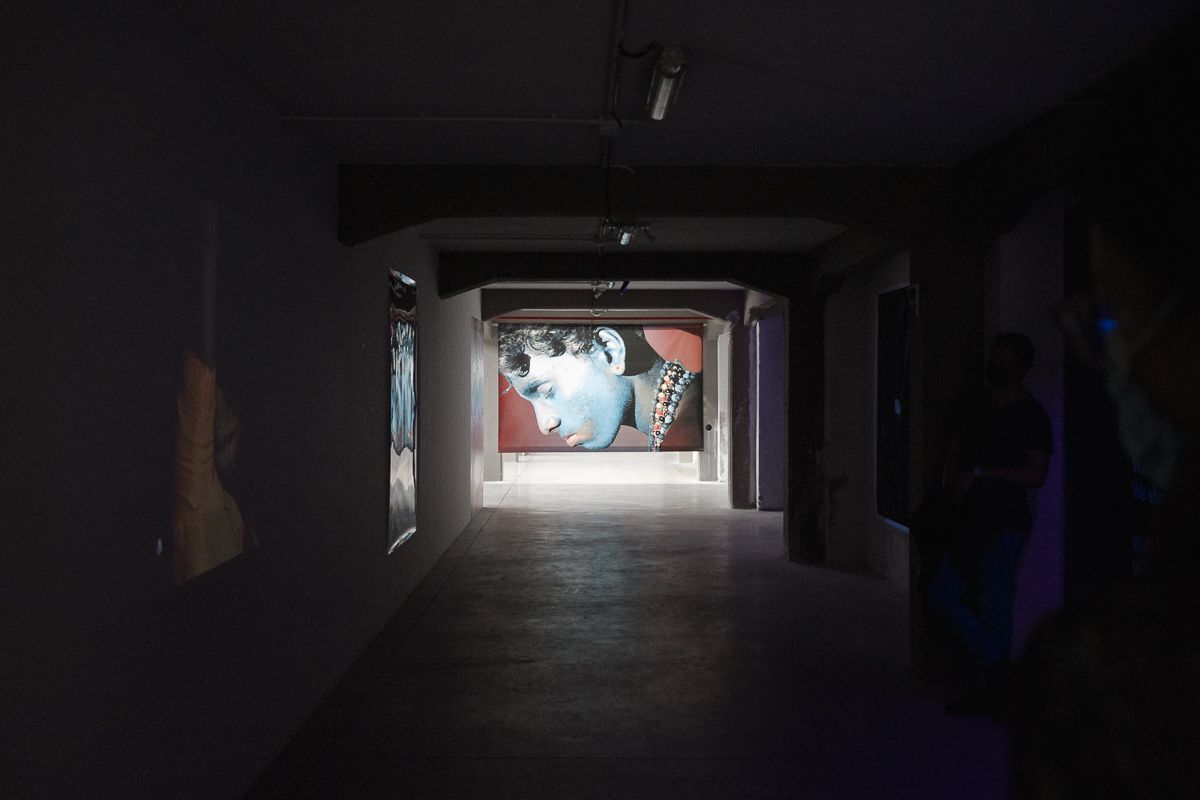
Vasantha Yogananthan “Myth of Two Souls” exhibition
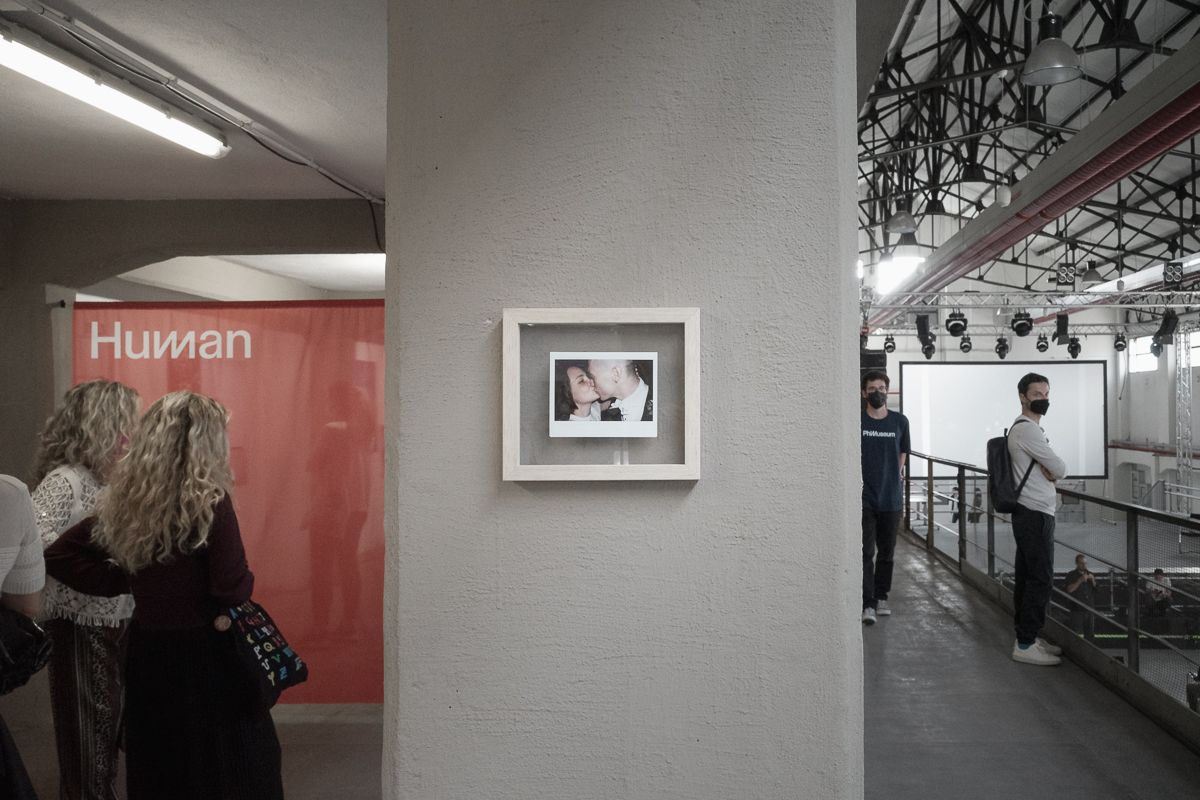
Samuel Fordham “C-R92 / BY” exhibition
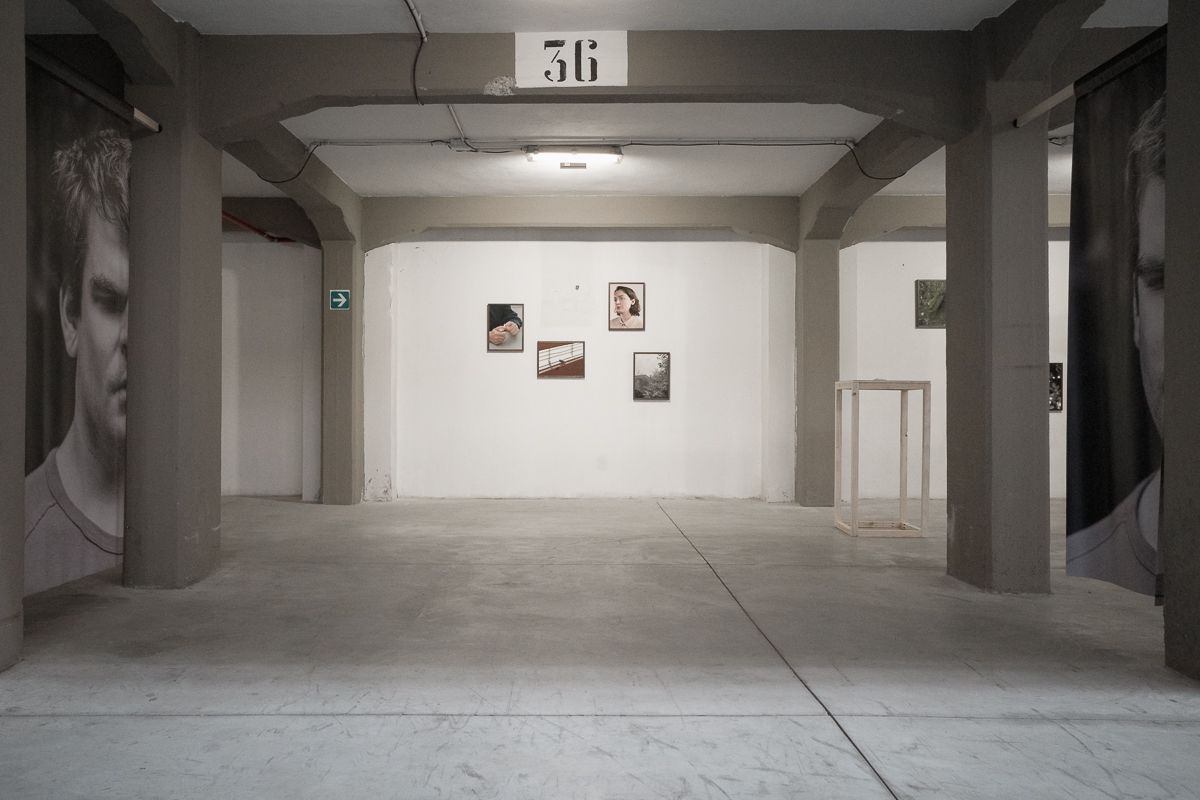
Ligia Popławska “Fading Senses” exhibition
Location: Bologna, Italy Type: Exhibition, Festival
Events by Location
Post Categories
Tags
- Abstract
- Alternative process
- Architecture
- Artist Talk
- artistic residency
- Biennial
- Black and White
- Book Fair
- Car culture
- Charity
- Childhood
- Children
- Cities
- Collaboration
- Community
- Cyanotype
- Documentary
- Environment
- Event
- Exhibition
- Faith
- Family
- Fashion
- Festival
- Film Review
- Food
- Friendship
- FStop20th
- Gender
- Gun Culture
- Habitat
- Hom
- home
- journal
- Landscapes
- Lecture
- Love
- Masculinity
- Mental Health
- Migration
- Museums
- Music
- Nature
- Night
- nuclear
- p
- photographic residency
- Photomontage
- Plants
- Podcast
- Portraits
- Prairies
- Religion
- River
- Still Life
- Street Photography
- Tourism
- UFO
- Water
- Zine

Leave a Reply